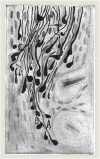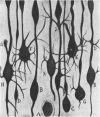A Century of Brain Regeneration Phenomena and Neuromorphological Research Advances, 1890s-1990s-Examining the Practical Implications of Theory Dynamics in Modern Biomedicine
- PMID: 35071231
- PMCID: PMC8773698
- DOI: 10.3389/fcell.2021.787632
A Century of Brain Regeneration Phenomena and Neuromorphological Research Advances, 1890s-1990s-Examining the Practical Implications of Theory Dynamics in Modern Biomedicine
Abstract
The modern thesis regarding the "structural plastic" properties of the brain, as reactions to injuries, to tissue damage, and to degenerative cell apoptosis, can hardly be seen as expendable in clinical neurology and its allied disciplines (including internal medicine, psychiatry, neurosurgery, radiology, etc.). It extends for instance to wider research areas of clinical physiology and neuropsychology which almost one hundred years ago had been described as a critically important area for the brain sciences and psychology alike. Yet the mounting evidence concerning the range of structural neuroplastic phenomena beyond the significant early 3 years of childhood has shown that there is a progressive building up and refining of neural circuits in adaptation to the surrounding environment. This review essay explores the history behind multiple biological phenomena that were studied and became theoretically connected with the thesis of brain regeneration from Santiago Ramón y Cajal's pioneering work since the 1890s to the beginning of the American "Decade of the Brain" in the 1990s. It particularly analyzes the neuroanatomical perspectives on the adaptive capacities of the Central Nervous System (CNS) as well as model-like phenomena in the Peripheral Nervous System (PNS), which were seen as displaying major central regenerative processes. Structural plastic phenomena have assumed large implications for the burgeoning field of regenerative or restorative medicine, while they also pose significant epistemological challenges for related experimental and theoretical research endeavors. Hereafter, early historical research precursors are examined, which investigated brain regeneration phenomena in non-vertebrates at the beginning of the 20th century, such as in light microscopic studies and later in electron microscopic findings that substantiated the presence of structural neuroplastic phenomena in higher cortical substrates. Furthermore, Experimental physiological research in hippocampal in vivo models of regeneration further confirmed and corroborated clinical physiological views, according to which "structural plasticity" could be interpreted as a positive regenerative CNS response to brain damage and degeneration. Yet the underlying neuroanatomical mechanisms remained to be established and the respective pathway effects were only conveyed through the discovery of neural stem cells in in adult mammalian brains in the early 1990s. Experimental results have since emphasized the genuine existence of adult neurogenesis phenomena in the CNS. The focus in this essay will be laid here on questions of the structure and function of scientific concepts, the development of research schools among biomedical investigators, as well as the impact of new data and phenomena through innovative methodologies and laboratory instruments in the neuroscientific endeavors of the 20th century.
Keywords: 20th cent. history of medicine; Ludwik Fleck; brain research; history of neuroscience; regeneration.
Copyright © 2022 Stahnisch.
Conflict of interest statement
The author declares that the research was conducted in the absence of any commercial or financial relationships that could be construed as a potential conflict of interest.
Figures





Similar articles
-
Making the brain plastic: early neuroanatomical staining techniques and the pursuit of structural plasticity, 1910-1970.J Hist Neurosci. 2003 Dec;12(4):413-35. doi: 10.1076/jhin.12.4.413.27917. J Hist Neurosci. 2003. PMID: 15069871
-
Santiago Ramón y Cajal's concept of neuronal plasticity: the ambiguity lives on.Trends Neurosci. 2002 Nov;25(11):589-91. doi: 10.1016/s0166-2236(02)02251-8. Trends Neurosci. 2002. PMID: 12392934
-
Abass Alavi: A giant in Nuclear Medicine turns 80 and is still going strong!Hell J Nucl Med. 2018 Jan-Apr;21(1):85-87. doi: 10.1967/s002449910713. Epub 2018 Mar 20. Hell J Nucl Med. 2018. PMID: 29550853
-
Catalyzing Neurophysiology: Jacques Loeb, the Stazione Zoologica di Napoli, and a Growing Network of Brain Scientists, 1900s-1930s.Front Neuroanat. 2019 Mar 18;13:32. doi: 10.3389/fnana.2019.00032. eCollection 2019. Front Neuroanat. 2019. PMID: 30936823 Free PMC article. Review.
-
From 'Nerve Fiber Regeneration' to 'Functional Changes' in the Human Brain-On the Paradigm-Shifting Work of the Experimental Physiologist Albrecht Bethe (1872-1954) in Frankfurt am Main.Front Syst Neurosci. 2016 Feb 25;10:6. doi: 10.3389/fnsys.2016.00006. eCollection 2016. Front Syst Neurosci. 2016. PMID: 26941616 Free PMC article. Review.
Cited by
-
Psychedelics and the 'inner healer': Myth or mechanism?J Psychopharmacol. 2024 May;38(5):417-424. doi: 10.1177/02698811241239206. Epub 2024 Apr 12. J Psychopharmacol. 2024. PMID: 38605658 Free PMC article. Clinical Trial.
-
Lampreys and spinal cord regeneration: "a very special claim on the interest of zoologists," 1830s-present.Front Cell Dev Biol. 2023 May 9;11:1113961. doi: 10.3389/fcell.2023.1113961. eCollection 2023. Front Cell Dev Biol. 2023. PMID: 37228651 Free PMC article.
References
-
- Awe J. P., Lee P. C., Ramathal C., Vega-Crespo A., Durruthy-Durruthy J., Cooper A., et al. (2013). Generation and Characterization of Transgene-free Human Induced Pluripotent Stem Cells and Conversion to Putative Clinical-Grade Status. Stem Cel Res. Ther. 4 (1), 1–15. 10.1186/scrt246 - DOI - PMC - PubMed
Publication types
LinkOut - more resources
Full Text Sources

